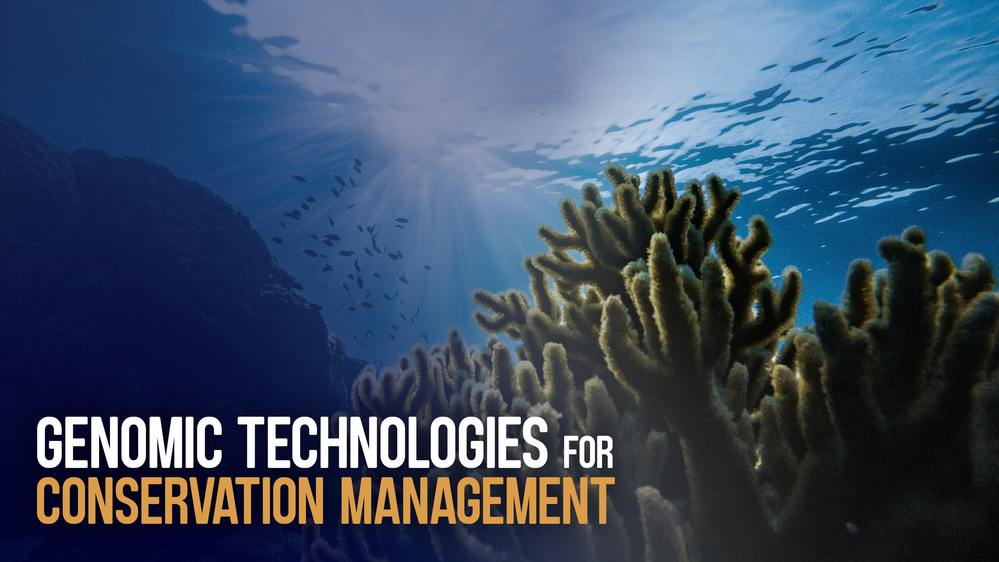Tuesday, 16 November 2021 New paper reveals research gaps for next-generation conservation technologies to reduce biodiversity loss
A new study provides a practical guide for decision-makers and practitioners on the emerging new tools for protecting biodiversity, and the remaining research gaps.
November 11, 2021 – More investment and support for research into emerging genomic tools for conservation is needed to prevent further biodiversity loss, according to a new paper published in Conversation Genetics.
A new publication explores the field of genomic technologies, and how and in which circumstances they could be used as additional tools to prevent the extinction of endangered species.
Dr Pamela Burger from Vetmeduni Vienna highlighted that genome analysis has already helped conservation managers “to understand the diversity and connectivity of endangered populations. But the new genome technologies can help select the best individuals for translocation or reintroduction programmes.”
Beyond that, “Genomic regions responsible for disease resistance or adaptive fitness can be identified, and in the long-term we might even be able to increase the resilience in a population,” added Prof. Elena Bužan from the University of Primorska.
For practitioners, there is still a gap in understanding about how this can be used for new challenges. Andrej Arih, head of department for nature conservation in Triglav National Park, said: “We are happy that genetic monitoring has improved our understanding of population structure and dynamics, and we hope that genomics will go a step further and help us predict how our ecosystems may adapt to future climatic changes.”
The paper is the result of a workshop on novel genomic tools for conservation that was organised in March 2020 as part of the G-BIKE (Genomic Biodiversity Knowledge for Resilient Ecosystems) project funding by the COST action programme of the European Union.
“It is fascinating to see that genomic tools are getting more and more advanced,” said Prof. Gernot Segelbacher from the University of Freiburg, and co-chair of the IUCN specialist group on conservation genetics. However, Prof. Segelbacher cautioned that there are still challenges for their use and “might be not readily applicable for many on the ground conservation problems”.

The G-BIKE workshop and paper aim to bring practitioners and researchers together to help bridge the gap between those studying genomic technologies and their potential, and those who are leading conservation programmes on the ground.
It comes after the Kunming Declaration was adopted during the high-level segment of the UN biodiversity conference 2020 that took place on October 12 and 13, 2021. It sets an objective “to develop, adopt and implement an ambitious and transformative post-2020 global biodiversity framework”.
Experts agree that new tools will be required to achieve the goals and targets of the new global biodiversity framework. Globally, the world is losing species and their habitats at an alarming rate, leaving many small and fragmented populations that are unable to recover on their own. Effective conservation is needed and genomic tools have the potential to revolutionize conservation management of small wild populations of endangered species and their captive counterparts, which serve as insurance populations for future reintroductions.
The new paper provides a practical guide about emerging technologies, how far advanced their development is and how they can be used. For Dr Mirte Bosse from Wageningen University, this was an “opportunity to connect to people outside [her] field of experience but with common goals” and she hopes that the paper can “inform, inspire and instruct conservation practitioners who want to use such tools for conservation”.
For Prof. Samantha Wisely from the University of Florida, the paper aims to “lessen the divide and increase communication between researchers using new genomic technologies and the conservation practitioners who must implement strategies to avert the current biodiversity crisis.”
"With a million species threatened with extinction, the world is currently discussing ambitious biodiversity targets for the post-2020 Global Biodiversity Framework of the Convention on Biological Diversity,” said Dr Elizabeth Bennett from WCS.
“These aim to prevent extinctions, and bend the curve towards recovery of the world's biodiversity. If we are to succeed, we have to consider all possible tools to support species recoveries, from conventional conservation techniques to novel ones emerging from genomics. The paper by Segelbacher and colleagues lays out some of these potential genomic options clearly and very accessibly to species conservation managers, and their potential value especially for small population management and genetic rescue."
Dr Thomas Brooks, IUCN Chief Scientist, further highlighted the timeliness of this paper. “This new paper makes an important contribution to the ongoing discussion as to the potential benefits, limitations, opportunities and risks of genomic technologies for biodiversity conservation and is highly timely, given the new Resolution from the 2021 IUCN World Conservation Congress in Marseille for development of an IUCN policy on synthetic biology in relation to nature conservation”.
Authors of the paper highlight some of the research gaps, and areas where support is needed for practitioners to use some of the genomics tools that have been available for many years but that often remain underused due to lack of capacity building or inadequate resources.
You can read more here.
About GBIKE
G-BiKE is a network of researchers and practitioners to assist scientists and practitioners across the EU and particularly in COST Inclusiveness Target Countries to integrate genetic and evolutionary knowledge into conservation planning policies, and to promote cross-border management and long term monitoring programs of evolutionary potential in order to ensure persistence of populations and species, and ultimately the continued supply of nature-based ecosystem services.




